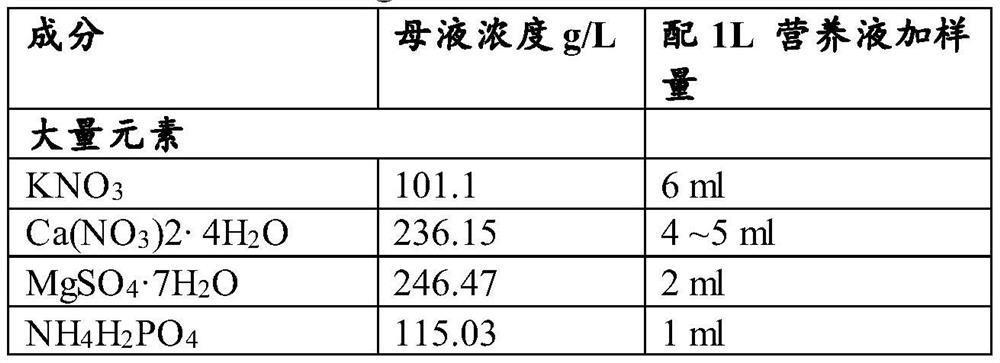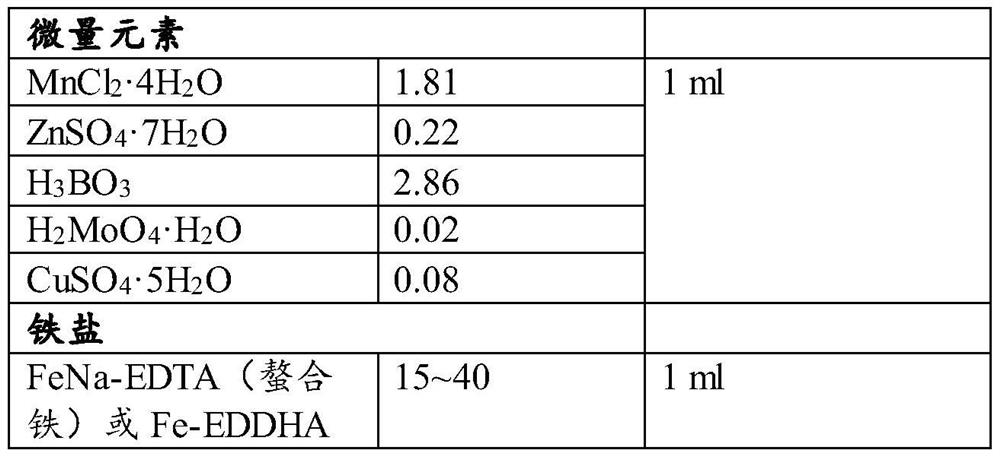Tissue culture and rapid propagation method for grape rootstocks
A technology of tissue culture rapid propagation and rootstock, applied in horticultural methods, botanical equipment and methods, cultivation, etc., can solve the problems of time and season restrictions on material collection, inconvenient actual operation, toxic disinfectants, etc., and achieve good disinfection effect , Increase the survival rate of transplanting, the effect of appropriate concentration
- Summary
- Abstract
- Description
- Claims
- Application Information
AI Technical Summary
Problems solved by technology
Method used
Image
Examples
Embodiment 1
[0057] (1) Explant collection
[0058] Collect healthy dormant branches of virus-free grape rootstock '101-14', cut the dormant branches into single-bud stem segments, the upper end of the bud is flat, 2-3 cm away from the bud, and the lower end is oblique, 3-4 cm away from the bud. The physiological dormancy was broken after being treated in a constant temperature water bath at 45°C for 90 minutes, and the single-bud stem segment was floated in clean water with a foam board for cultivation. The culture environment is light intensity 30~40μmol·m -2 ·s -1 (or 2000Lx~3000Lx), the light time is 14~16h, and the temperature is 25±2℃. Sampling was carried out when the length of new shoots reached 10-20 cm, and stem segments cut to 5 cm were used as explant materials.
[0059] (2) Surface disinfection of explants
[0060] Put the stem segment into the container and soak it with detergent for 5-10 minutes, then rinse it with running water for 2-3 hours, and finally rinse it with d...
Embodiment 2
[0076] Collect the dormant branches of the virus-free grape rootstock 'SO4', treat the dormant branches in hydroponics, disinfect the surface of the explants, inoculate the explants and initiate proliferation. The culture conditions are the same as in Example 1. In the proliferation culture, when the medium condition is WPM+IBA0.2mg / L+sucrose 30g / L+agar 6.5~7g / L, the second-generation proliferation coefficient of 'SO4' is 2.7, and sprouts and roots at the same time, the third-generation multiplication coefficient is 2.8, and the root system is developed And the density of the main root is relatively high, and the leaves and roots are not browned; the steps of hydroponic seedling hardening and domestication transplanting are the same as those in Example 1, and the survival rate of 'SO4' is 94.5% in hydroponic cultivation and 92.3% in transplanting.
Embodiment 3
[0080] The dormant branches of the virus-free grape rootstock '110R' were collected, the dormant branches were treated in hydroponics, the surface disinfection of the explants, the inoculation of the explants and the culture conditions for initial proliferation were the same as in Example 1. In the proliferation culture, when the medium condition is WPM+IBA 0.2mg / L+sucrose 30g / L+agar 6.5~7g / L, the second-generation proliferation coefficient of '110R' is 3.6, and it germinates and takes root at the same time; the third-generation multiplication coefficient is 3.5, and the root system is well developed and The density of the main root is relatively high, and the leaves and roots are not browned. The steps of hydroponic seedling hardening and domestication and transplanting are the same as Example 1. The survival rate of '110R' is 85.1% in hydroponic and 90.0% in transplanting.
PUM
 Login to View More
Login to View More Abstract
Description
Claims
Application Information
 Login to View More
Login to View More - R&D
- Intellectual Property
- Life Sciences
- Materials
- Tech Scout
- Unparalleled Data Quality
- Higher Quality Content
- 60% Fewer Hallucinations
Browse by: Latest US Patents, China's latest patents, Technical Efficacy Thesaurus, Application Domain, Technology Topic, Popular Technical Reports.
© 2025 PatSnap. All rights reserved.Legal|Privacy policy|Modern Slavery Act Transparency Statement|Sitemap|About US| Contact US: help@patsnap.com


